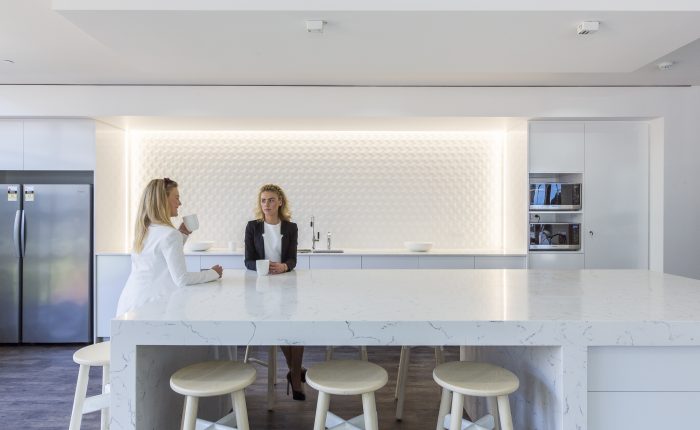The traditional workspace has changed significantly over the past 18 months due to COVID-19 lockdowns and infection control. Much discussion continues to be had around whether the traditional workspace will exist in the future.
We’ve all needed to adapt, working from home has become the new norm because it’s been mandated but the need for human connectivity and positive mental wellbeing seems to be flashing at us all through big neon lights.
We’ve worked with our valued clients to deliver spaces that accommodate the now and the future. Key drivers of design over the past 18 months have been the need for workspaces that allow employee ‘shifts’ providing the flexibility for employees to both work from home and work in the office and including spaces that can accommodate changing circumstances like adding new workstations, tele-conference facilities and casual meeting zones.
In some parts of Australia, we’ve been fortunate enough to not endure lockdown months on end at a time that has seen the temporary elimination of the traditional office workspace, like in UK and America.
We don’t believe it’s time to move to a virtual working world because there are changes that can be made in your workplace design to allow for communicating virtually, allowing social distancing, and installing technology to minimise infection control. The pluses? Human connectivity and accountability.
However, research can tell us otherwise. In a recent study, more than two-thirds of people surveyed claimed that they are more productive working from home than in an office and one in three believe it has made them less stressed, mainly due to elimination of travel.
On the flipside, working from home can bring feelings of isolation and lack of motivation. Bumping into a colleague or having a meeting can reignite the fire in your belly. We motivate, get inspired by and support one another. We are humans and as humans, we seek connectivity with our peers. Most people could tell you that they value the work-life divide.



